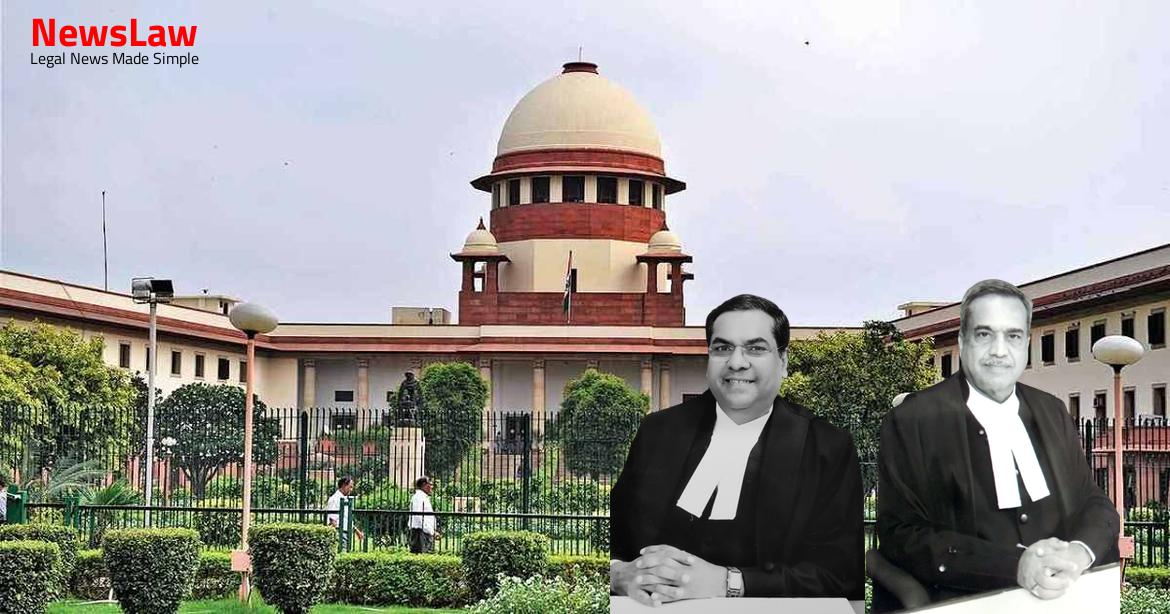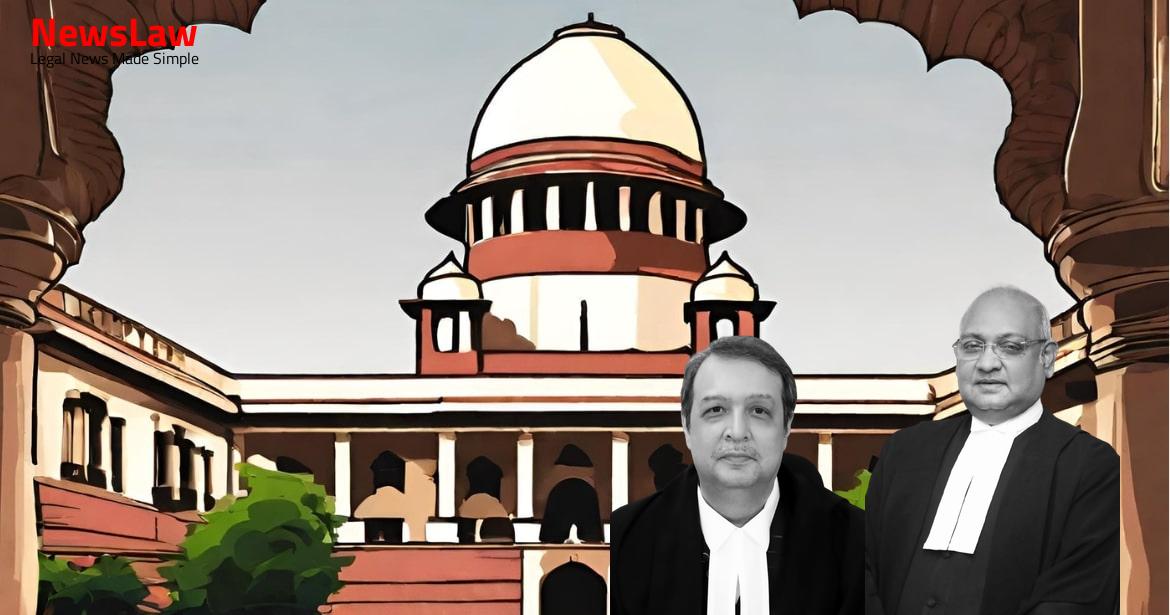In a significant legal decision, the Supreme Court of India has upheld the conviction in the case involving the attack on an Anti-Liquor Activist. The judgment follows the incident on 24 December, 1999, where the victim was fatally attacked during an altercation. The appellant’s role in the premeditated attack resulting in the victim’s death was under scrutiny. The prosecution highlighted the victim’s involvement in an ‘Anti-Liquor Movement’ as a possible motive for the attack. Let’s delve into the details of this crucial ruling.
Facts
- On 24 December, 1999, an altercation ensued between PW5 and A4, an illicit liquor vendor.
- The victim was attacked by all accused persons, including the appellant, armed with deadly weapons while he was talking to a group of individuals.
- The victim attempted to flee on a scooter but was stopped by the accused.
- The F.I.R. was registered under various sections of the IPC after the victim was fatally attacked and a bomb was thrown at a witness’s house.
- The prosecution highlighted the victim’s involvement in an ‘Anti-Liquor Movement’ as a possible motive for the attack.
- The victim succumbed to his injuries and was pronounced dead at the hospital.
- The appellant disputed the prosecution’s case and questioned the credibility of the witnesses during the trial.
Also Read: Mistaken Bid Rectification Case: Balancing Equity in Tender Matters
Arguments
- The appellant argues that a singular stab wound on the lower chest is not a life-threatening injury.
- The appellant claims they did not possess the intention or knowledge that the harm inflicted would cause the death of the victim.
- Learned counsel for the respondent defended the impugned judgment.
- The evidence on record was referred to by the counsel for the respondent.
- Concurrent findings and conviction by both the Sessions Court and the High Court were upheld.
- No interference was deemed necessary for the findings and conviction.
Also Read: Stamping Standards Upheld: B. Ramesh Hegde v. Praveen Shetty
Analysis
- The appellant’s role in the premeditated attack resulting in the victim’s death was under scrutiny.
- The prosecution needed to highlight serious flaws in the witnesses’ testimonies to discredit their accounts.
- A dagger was used in the attack, deemed a deadly weapon, which indicated premeditation.
- Inconsistencies regarding the weapon and the overt act were found in the testimonies of witnesses.
- The credibility of witnesses plays a crucial role in establishing guilt beyond reasonable doubt.
- The appellant’s intention to cause death with the attack needed to be proven.
- Presence in an unlawful assembly and use of deadly weapons were key factors in the case.
- Witnesses turning hostile and discrepancies in their statements were explored for credibility.
- The prosecution’s case needed to prove murder under Section 300 of the IPC.
- The testimonies of witnesses needed to be carefully analyzed for reliability and credibility.
- The timing of the incident and chaotic circumstances were considered for discrepancies in testimonies.
- Contradictions in witness statements were examined to determine the strength of the prosecution’s case.
- The prosecution’s inability to prove the case beyond a reasonable doubt was discussed.
- Medical evidence and eyewitness testimonies were evaluated to determine the offender’s actions.
- The role of each witness and their consistency in statements were crucial in establishing the facts.
- The conviction under Section 302 of the IPC was questioned due to lack of sufficient evidence.
- Eyewitness testimony may have discrepancies but should not be disregarded based on minor variations
- Appellant’s argument that only one out of eight victim’s injuries was grievous is refuted as the fatal injury to the chest was sufficient to cause death quickly
- Court cited a previous case where a single stab wound leading to death was considered murder under section 300 of IPC
- Victim’s cause of death was haemorrhage due to a wound on the heart apex, indicating a premeditated attack with deadly intent
- Noted the distinction between culpable homicide and murder, with murder being a specific type within the broader category of culpable homicide
- Listed factors to determine intention to cause death based on the nature of the weapon, location of the injury, presence of prior enmity, among others
- Applied the criteria from another case to determine contradiction in witness statements as affirming to the contrary in a way that both statements cannot coexist
- High Court’s affirmation of the conviction is agreed upon
- Impugned judgment warrants no interference
- Multiple conditions of section 300, IPC exist in this case to convict the appellant under section 302
- Appellant’s conduct falls under both clauses (1) and (3) of section 300, IPC
- Intention to cause death is evident from the appellant’s conduct and the nature of the fatal injury inflicted
Also Read: Judgment Summary: Balancing Equity in Commercial Contracts – Original Name v. State
Decision
- The appellant is directed to surrender before the concerned court immediately
- The appellant must surrender not later than 3 weeks from the date of the order
- The purpose of surrendering is to serve out the remainder of the appellant’s sentence
- The order granting bail to the appellant on February 13, 2015, has been vacated
Case Title: JOY DEVARAJ Vs. THE STATE OF KERALA (2024 INSC 473)
Case Number: Crl.A. No.-000032-000032 – 2013



